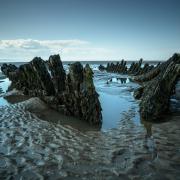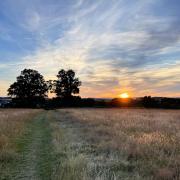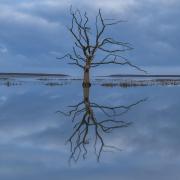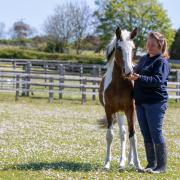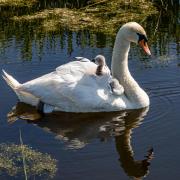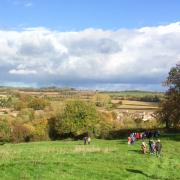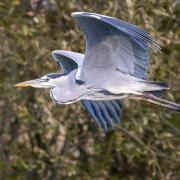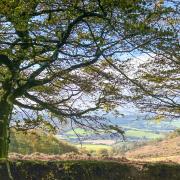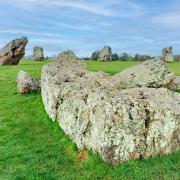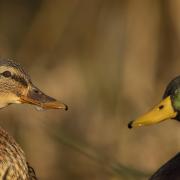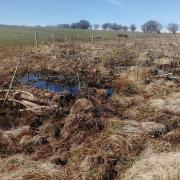Over the next month Wells Cathedral will be hosting an exhibition inspired by its magnificent surroundings. Andrea Cowan is given a glimpse of what’s in store from the successful Somerset artists that are taking part.
When Wells Cathedral agreed to host the exhibition of shortlisted work in the Wells Art Contemporary (WAC) open art competition in 2019, no-one foresaw how seamlessly the collaboration would work, and that it would become one of the highlights in the city’s cultural calendar.

‘The late Somerset artist, Kate Noble, founded WAC in 2012 and oversaw its development for the first five years with her inimitable spirit and drive,’ says WAC Chair, Paddy O’Hagan. ‘I’m sure she would be delighted in how the partnership with the Cathedral has progressed. It was the first English cathedral to be designed in the revolutionary new Gothic style of architecture in the 12th century, considered thoroughly modern and highly innovative, so has always pushed boundaries.’
The Gallery Show displays approximately 150 artworks in the Cloisters. But the unique surroundings of the Cathedral has led to an exciting development, the Installation Show, resulting in four community works and approximately 30 site-specific installations located throughout the cathedral and gardens.

Three highly distinguished WAC selectors were tasked with deciding which of the 300 plus entries for the Installation Show successfully fulfilled the brief of reflecting the architectural, spatial and spiritual aspects of Wells Cathedral. The panel comprised of: Jacquiline Creswell, Visual Arts Advisor and an experienced curator of cathedral spaces; Adelaide Damoah, a London-based British-Ghanaian artist and Rebecca Newnham MA(RCA) FRBS, artist, sculptor and designer.
Wells Cathedral certainly provided plenty of inspiration and the high-quality of entries gave the selectors a challenging job. It was exciting to hear that 10 of the final installations selected are from local artists. The first piece to be seen on arrival at Wells Cathedral in the Pilgrim Arch will be Choral Harmony, a free-flowing sculpture comprising of stainless-steel tubes and acrylic rods by Ian Marlow from Frome. ‘It takes two important aspects of the Cathedral as its foundation: choral singing and the stained-glass windows, both of which lift the spirits,’ explains Ian.

Offering Vessel from Rosie Musgrove, an artist and stone-sculptor from Bristol, also takes inspiration from Cathedral materials. This beautifully decorated bowl has been hand-carved from a rough block of alabaster. ‘Alabaster is a vulnerable stone, almost ethereal and I felt a fitting contrast to the robust cathedral stone of Doulting and Chilmark,’ says Rosie. ‘The Cathedral was also decorated with colour in Medieval times, and I have reflected this by using the Persian red silk and the metallic gold that would have abounded on the stonework of the building.‘
Hamish Young, a sculptor from Portishead, has created Field, consisting of over two thousand cast paper limpet shells placed in a circle on the floor in the South Transept. ‘The forms of limpet shells echo both the architectural structure of the cathedral roof (the shape of bosses and the ribbed vaults) and the stars represented on the Astronomical clock, connecting earthly and universal homes,’ he explains. Circles also appear with the installation, Magnify, by Jane Taylor-Weekes from Bath. A mirror placed on the floor of the Lady Chapel, ‘mirrors the other circular shapes in its surrounding and reflects the grandeur of the architecture above,’ says Jane. ‘The viewer is caused to see what is above as they look down, so that the humble act of bowing is simultaneously an act of exalting.’

Hatchings by Rachel Goodison, from Norton Sub Hamdon, is on the floor of the North Transept. ‘It emphasises the soaring movement of the cathedral’s pillars and arches towards the heavens,’ says Rachel. The piece is created from wool, wire, sand and metal, with eight-foot high, brightly coloured knitted ‘feelers’. Another knitted installation comes courtesy of Lou Baker from Bristol. Life/Blood is a dramatic, walk-through installation of multiple, blood-red knitted sculptures. ‘Knitting normally has associations with comfort and domesticity,’ says Lou. ‘Using sloppy knitting as a medium in sculpture, intentionally unravelling, with loose ends unfinished, subverts these expectations.’
In the Chapter House, The Uninvited Guest from the Unremembered Past by Nicola Turner from Bath, is a mixed media installation including horsehair, coir and wool, locally sourced from Somerset, ‘material that has had a previous life and is embedded with its own stories,’ Nicola explains. ‘It is created from flows of material and responds and converses with place, morphing and growing around the architecture.’
Juliet Duckworth, from Shepton Mallet, is a multimedia artist and her piece, Listen to them Falling, comprises multiple strings of apples, wrapped in clay and suspended invisibly from the ceiling, provides a multi-sensory experience for visitors. ‘Apples signify original sin in the Old Testament and redemption of that failing in the New Testament,’ says Juliet. ‘This installation is a live performance of the natural decaying process.’

Lucy Large from Watchet has an interesting connection. ‘In the mid-1970s my father, Roger Large, was commissioned to design, carve and gild the organ screen at Wells Cathedral,’ she explains. ‘Following his death in 2019 I found some gold leaf in the drawer of his studio desk.’ Lucy has gilded eight bramble branches she had picked and dried. ‘The process became one of devotion – a tending to and paying intimate attention to these plants. It required care and reverence, in order to avoid being spiked or scratched in the process.’
Meanwhile, for Leah Hislop from Taunton, this is her second piece to be selected for WAC, having won the Somerset Arts Week Award in 2021. ‘It gave me the confidence and support to push my practice forward,’ Leah explains. This year, her artwork, A Safe Space, reflects on the themes of The Holy Trinity, and is made from individually hand-folded paper triangles from donated and unwanted books.
This is a glimpse of what to expect. ‘WAC is passionate about the importance of art for the community, ensuring locals have access to a culturally rich environment,’ concludes Paddy. ‘The joy of this exhibition is that everyone will find something that they are really drawn to, and there is no right or wrong.’
The exhibition will run from August 5 until September 2.
For more information on the Installation Show at WAC and the selected artists, as well as the Gallery Show, visit wellsartcontemporary.co.uk




